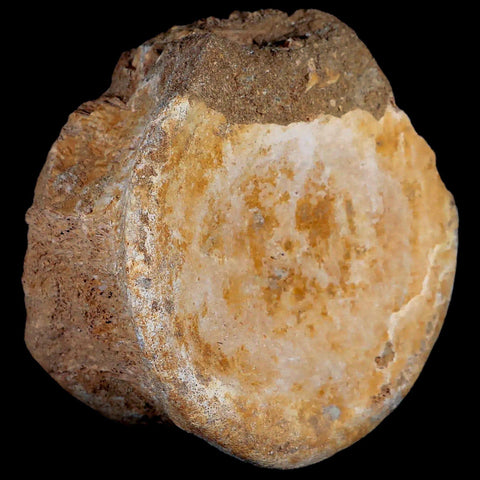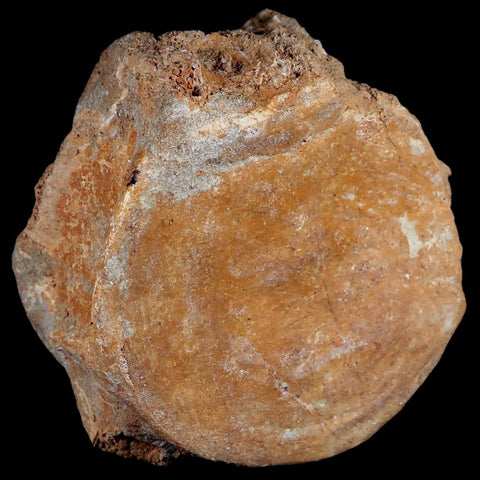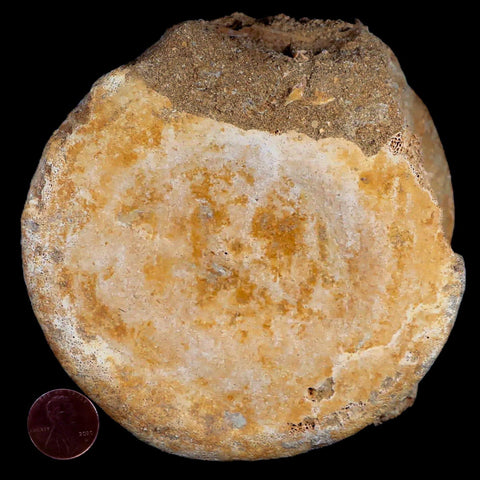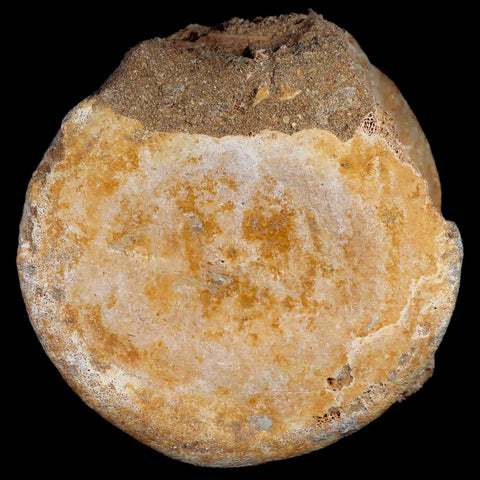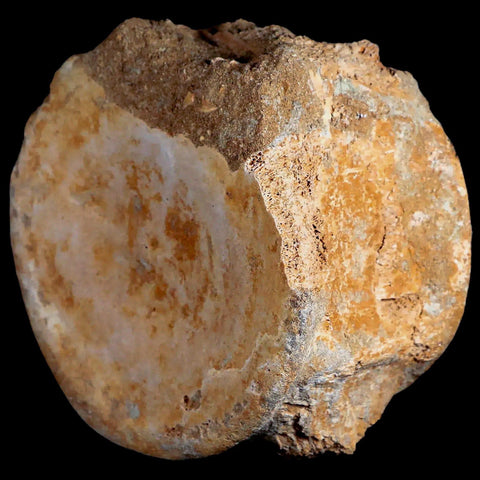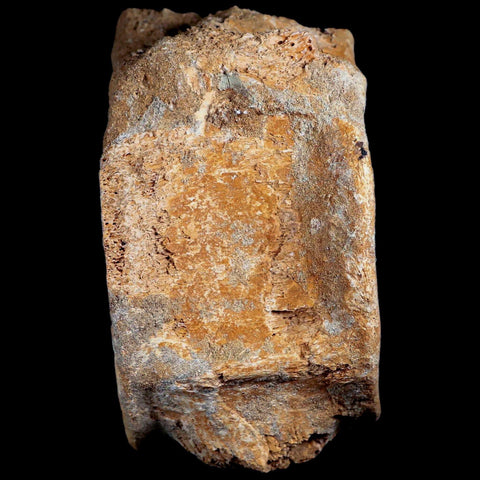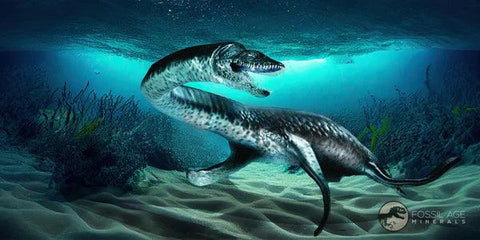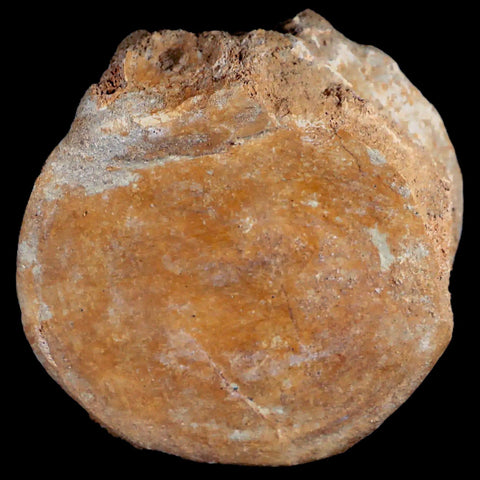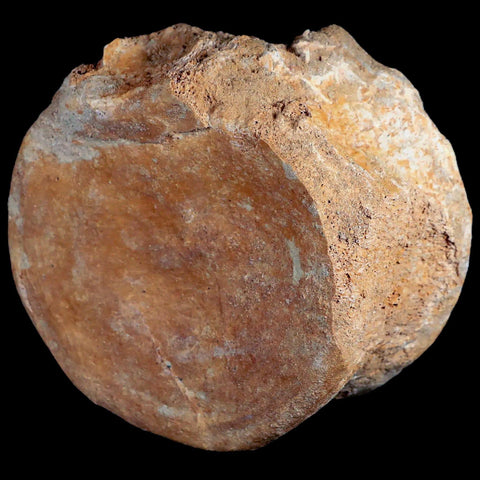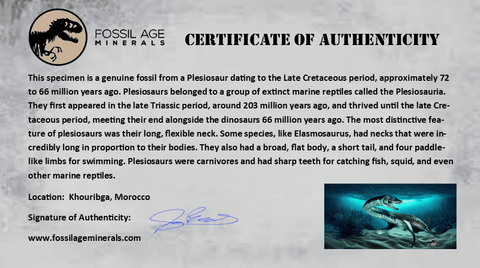XL 4.8" Plesiosaur Fossil Vertebrae Cretaceous Dinosaur Era Morocco Zarafasaura COA
Location: Khouribga, Morocco
Weight: 1 Pound 11.2 Ounces
Dimensions: 4.8 Inches Long, 4.7 Inches Wide, 4.5 Inches Thick
Comes with a Certificate of Authenticity.
The item pictured is the one you will receive.
This is a genuine fossil.
Plesiosaur Zarafasaura
Zarafasaura oceanis is a long-necked elasmosaurid marine reptile that lived during the Late Cretaceous period, approximately 72 to 66 million years ago, reaching an estimated length of 23 feet (7 meters). Belonging to the family Elasmosauridae, its genus name combines the Arabic word Zarafa, meaning “giraffe,” with the Greek Saurus, meaning “lizard,” while the species name oceanis translates as “daughter of the sea.” This species was first formally described in 2011 by paleontologist Dr. Peggy Vincent and her team at the National Museum of Natural History in Paris, based on incomplete skull fossils discovered in Morocco. As a carnivorous predator, Zarafasaura oceanis used its elongated neck and streamlined body to hunt fish and other small marine animals, making it a key predator in its ancient ocean ecosystem.
Closely related to Zarafasaura, Plesiosaurus is a well-known genus within the broader Plesiosauriae family. It lived exclusively in marine environments from approximately 228 million to 61.6 million years ago and was also carnivorous, preying on fish and other small sea creatures. Plesiosaurus is documented from 938 fossil specimens, providing a rich record for paleontologists studying marine reptile evolution. Despite its extensive fossil record, artistic reconstructions often fail to distinguish Plesiosaurus from other plesiosaur genera, and many depictions are influenced by cryptozoological myths, including legends surrounding the Loch Ness Monster.
Together, Zarafasaura oceanis and Plesiosaurus exemplify the diversity, adaptation, and evolutionary success of marine reptiles during the Mesozoic Era, highlighting their role as dominant predators in prehistoric oceans and offering valuable insight into prehistoric marine ecosystems, predator-prey dynamics, and plesiosaur evolution.
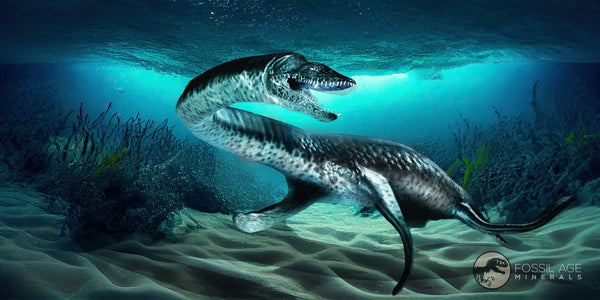
Please be aware of the nature of fossils:
Being buried under the ground for millions of years under tons of pressure tends to be rough. No fossil comes out of the ground whole and perfect. Most fossils have undergone some restoration, while others are altered by man simply to enhance their presentation in different ways. The workers in Morocco do a very professional job of unearthing and preserving these natural treasures; however, commonly, natural cracks are visible on the surface. These are part of the natural beauty of the fossil and are not considered defects.


